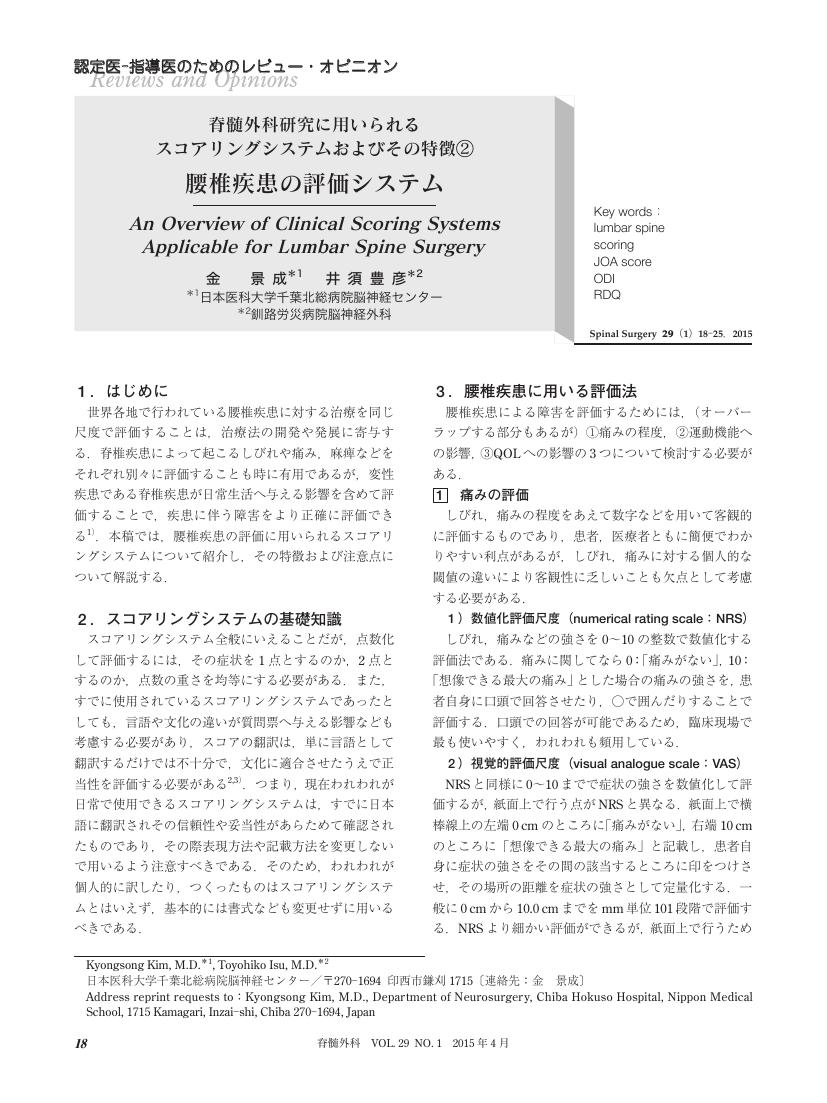8 0 0 0 OA 仙腸関節障害の治療経験
- 著者
- 森本 大二郎 井須 豊彦 金 景成 菅原 淳 濱内 祝嗣 下田 祐介 笹森 徹 松本 亮司 磯部 正則
- 出版者
- 日本脊髄外科学会
- 雑誌
- 脊髄外科 (ISSN:09146024)
- 巻号頁・発行日
- vol.24, no.1, pp.6-11, 2010 (Released:2017-05-11)
- 参考文献数
- 22
- 被引用文献数
- 7 3
Objective : Sacroiliac joint (SIJ) dysfunction can produce lower back pain and referred symptoms in the buttocks, legs and groin. Approximately 3.5~30% of all lower back pain is associated with SIJ dysfunction. Recently, we have been treating more SIJ dysfunction cases due to the increasing incidence of lumbar degenerative disorder (LDD). Here we report our experience in treating 20 SIJ dysfunction patients. Patients and methods : The study involved 20 SIJ dysfunction patients (5 male and 15 female) with a mean age of 67.6 years (range 35~81 years). SIJ dysfunction was diagnosed using the one finger test, modified Newton test and sacroiliac joint block. Patients initially underwent conservative treatment, including sacroiliac joint block, stabilization using pelvic belts and rehabilitation. Sixteen patients underwent surgery for LDD. The mean follow-up period was 4.1 months. The clinical outcomes were evaluated using the Japan Orthopedic Association Scale score (JOA score). Results : All patients with SIJ dysfunction showed symptom improvement. In the group of the patients who underwent the LDD operation, the improvement score and recovery rate of treatments for SIJ dysfunction tended to be lower than for those without surgery for LDD. Fourteen patients (70%) had some referred symptoms in the leg and lower abdomen. Conclusion : Our treatment of SIJ dysfunction resulted in good clinical outcomes. SIJ dysfunction should be considered a cause of lower back pain and a potential factor in failed back surgery. SIJ dysfunction should be considered when designing treatments for LDD.


